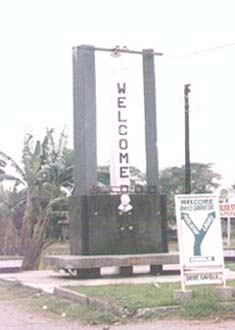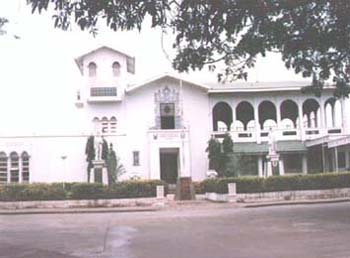

| Municipality of BADOC |

It was named after a plant called "Badoc-Badoc". Badoc was established as a pueblo in 1714 by Augustinian friars. Historical records show that the late founding of the town might have been caused by the notoriety of the place at the time. The Badoc Island, know as "Poro", situated about one nautical mile seaward from the coastline of Paguetpet (now) renamed Virgen Milagrosa, was said to be the favorite haven and hangout of fierce and hostile Moro and Zambal marauders. They stayed long in the island and it was only after they moved out that the town was deemed officially founded. Badoc has an area of 66.60 square kilometers. Farming if the principal occupation and means of livelihood of the people, with rice as the staple product. Garlic, onion and virginia tobacco are the so-called cash crops, while other products locally grown include mongo, corn, beans, peanuts and vegetables. Commercial establishments n the municipality are rather concentrated or centered within the poblacion area or town proper. The public market serves as the center of trading activities especially on Mondays and Tuesdays, the principal market days of the town.
Being a highly agricultural town, the people of Badoc are principally engaged in farming. Nevertheless, many residents have already started various kinds of business ventures, like salt-making, fishing, rice milling, iron and motor works, and basi making. Social development in all levels of learning exists. There are Day Care Centers, both in the poblacion and in the rural areas that caters early education to pre-schoolers before they enter one of the public elementary schools in the municipality. There are also secondary schools located in the poblacion and in the barangays. Two of the high schools also offer tw-year collegiate courses. Cultural heritage includes the Juan Luna Shrine in honor of the great Filipino painter-patriot Juan Luna y Novicio who was born in Badoc and the Spanish-built catholic church, which is the shrine of the Miraculous Virgin Mary. It was built during the Spanish regime. In the other side of local culture, they still have the native dances particularly the "sagamantika" and the "la hota Ilocana" and folk dances such as the tinikling, basuhan and anihan. Festivities, other than the traditional celebration of the town fiesta, are the Feast of Saint John the Baptist, patron saint of Badoc; the coronation anniversary of the Miraculous Virgin Mary and the "King Constantin and Queen Elena" festival, which is held in the month of May. |






